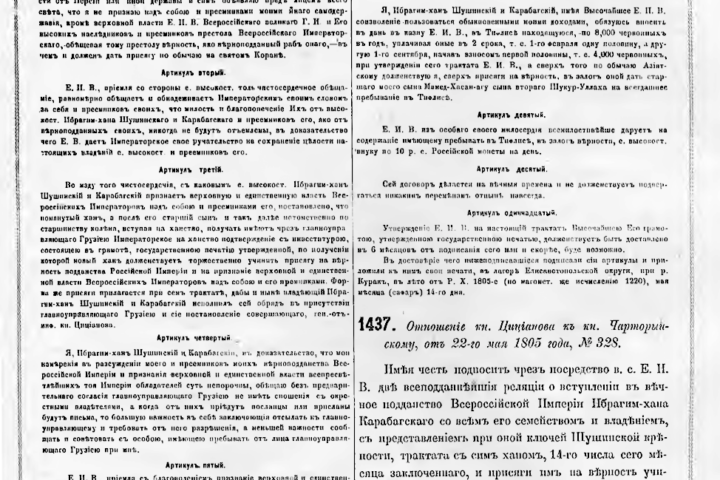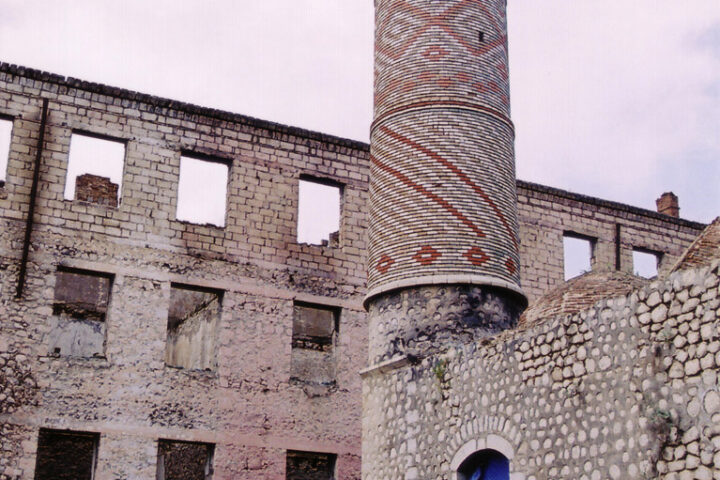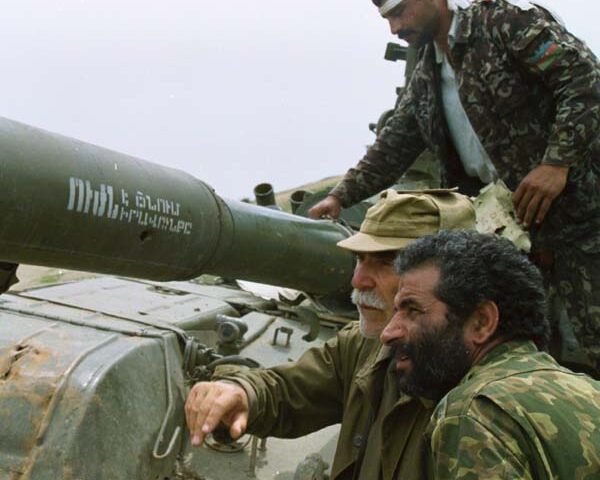President Serzh Sargsyan’s recent remarks about “Greater Armenia” have attracted widespread attention and much criticism, but an ongoing Armenian effort to lay claim to a community which formed part of the ethnogenesis of the Azerbaijani nation has not, even though its immediate consequences—the destruction, desecration or restoration of Caucasian Albanian historical monuments in the occupied territories—may be far more serious as an example of cultural imperialism and ethnocide.
In a new study, Azerbaijani historian Bakhtiyar Tuncay says that “Armenian historians have been trying to ‘Armenianize’ the history, culture, architectural monuments and language of Caucasian Albania” not only to lay claim to a more ancient cultural tradition than their own, but also to provide a cover to their desecration and even destruction of the historical monuments of this people who—despite their Christian religion—were in fact ethnic Turks and belonged to “the nomadic tribes of the Kipchaks.” [1]
“Armenians admit,” Tuncay continues, “that the language of Albanian historians does not resemble either ancient or modern Armenian.” The two very different peoples shared only a common religion, but that is not enough to justify treating them as the same. “Albanians spoke the language of the Kipchaks,” he notes. And they were thus a Turkic people whatever their religion. Suggesting otherwise is to fall into the trap of projecting today’s clash of civilizations argument onto the past, something that may be politically useful, but is fundamentally wrong.
Saying that he hasn’t “discovered America” in this case—earlier scholars such as Bartold had concluded the same—Tuncay points out that clarity on this matter has a number of consequences. On the one hand, “manuscripts in European archives presented as Armenian sources in fact belong to Albanians” and need to be understood in that way. Tuncay’s work includes an Albanian grammar and a dictionary of some 1700 Albanian words to assist scholars making use of these texts.
But on the other hand, it means, according to Tuncay, that “all churches in the territory of modern Armenia, as well as stone monuments that they call “khachkars,” are in reality Albanian monuments, which is proven by the inscriptions on them. For example, it is written on one of the churches there that it was built by an Albanian khan, while the grave of the Albanian Catholicos can be found and is clearly identified. One of the cross stones bears a sign that Albanian Duke Kirikor erected the monument so that everyone who passed could pray there.”
This might be a historical curiosity were it not for the Armenian-Azerbaijani war. Because the Armenians have insisted on the “Armenianness” of the monuments of the Caucasian Albanians, they have felt justified in “restoring” or destroying them in the occupied territories, and they have denounced as a crime against Armenians any Azerbaijani actions involving Caucasian Albanian monuments on the territory of Azerbaijan.
Another Azerbaijani historian, G.G. Mammadova, expands on this point. She notes that all these monuments “were built on the land of Azerbaijan by Albanian princes and architects and are not Armenian,” whatever Armenians say. And she points to the “fierce fight” many Armenian scholars and officials have engaged in to “detach them from the Azerbaijani architectural heritage and to appropriate them to Armenia.” [2]
The Armenian occupation, she writes, “inflicted irreparable damage to the monuments on the territory of Karabakh and the surrounding districts.” Some of this destruction, of course, is “the consequence of hostilities, but another larger part is the result of cultural terror and systematic destruction of the traces of Azerbaijanis in the occupied territories.” Moreover, she continues, “if a policy of terror is being conducted against the monuments of Islam, then another part of the Azerbaijani cultural heritage, the Christian church architecture of Caucasian Albania, is being subjected to a policy of forcible ‘Armenianization.’”
At present, Mammadova points out, “Armenian researchers are carrying out so-called restoration work on these monuments” to that end. By its very nature, she says, “this is illegal work as it is done on occupied territory, on monuments that belong to others, and without the participation of Azerbaijani scientists.” Moreover, in certain cases, “traces showing that the buildings belong to Albanian culture are being erased,” with “specific features of Albanian Karabakh architecture being falsified and destroyed under the guise of restoration work.” And she adds that “unfortunately,” it sometimes happens that “foreign specialists” are employed in this, something the Armenians clearly believe gives “their fabrications ‘scientific authenticity.’”
To stop this cultural vandalism, she calls for the “international monitoring of monuments of material culture” in the occupied territories, something that Mammadova says “will reveal all the consequences of the war and cultural terror.”
Five years ago, the Azerbaijani government estimated that “the overall damage inflicted to Azerbaijan’s cultural heritage” by the Armenian occupation had reached 7 billion US dollars, although in fact the destruction of many historical monuments has resulted in losses to which no one can put a price. At that time, the Azerbaijani Foreign Ministry said that “the protection of all historic and archaeological sites is a priority for us” and warned that Baku’s diplomatic missions will challenge all Armenian claims against Azerbaijan and document all Armenian destruction of Azerbaijan’s heritage. That process continues, and that heritage now includes the Caucasian Albanians, regardless of Armenian efforts to claim that community for its own.
Notes
[1] See http://www.news.az/articles/society/35054 (accessed 12 September 2011).
[2] See http://www.visions.az/culture,71/ (accessed 12 September 2011).








